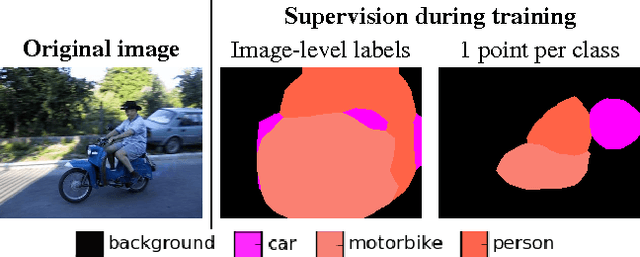What's the Point: Semantic Segmentation with Point Supervision
Paper and Code
Jul 23, 2016



The semantic image segmentation task presents a trade-off between test time accuracy and training-time annotation cost. Detailed per-pixel annotations enable training accurate models but are very time-consuming to obtain, image-level class labels are an order of magnitude cheaper but result in less accurate models. We take a natural step from image-level annotation towards stronger supervision: we ask annotators to point to an object if one exists. We incorporate this point supervision along with a novel objectness potential in the training loss function of a CNN model. Experimental results on the PASCAL VOC 2012 benchmark reveal that the combined effect of point-level supervision and objectness potential yields an improvement of 12.9% mIOU over image-level supervision. Further, we demonstrate that models trained with point-level supervision are more accurate than models trained with image-level, squiggle-level or full supervision given a fixed annotation budget.
 Add to Chrome
Add to Chrome Add to Firefox
Add to Firefox Add to Edge
Add to Edge